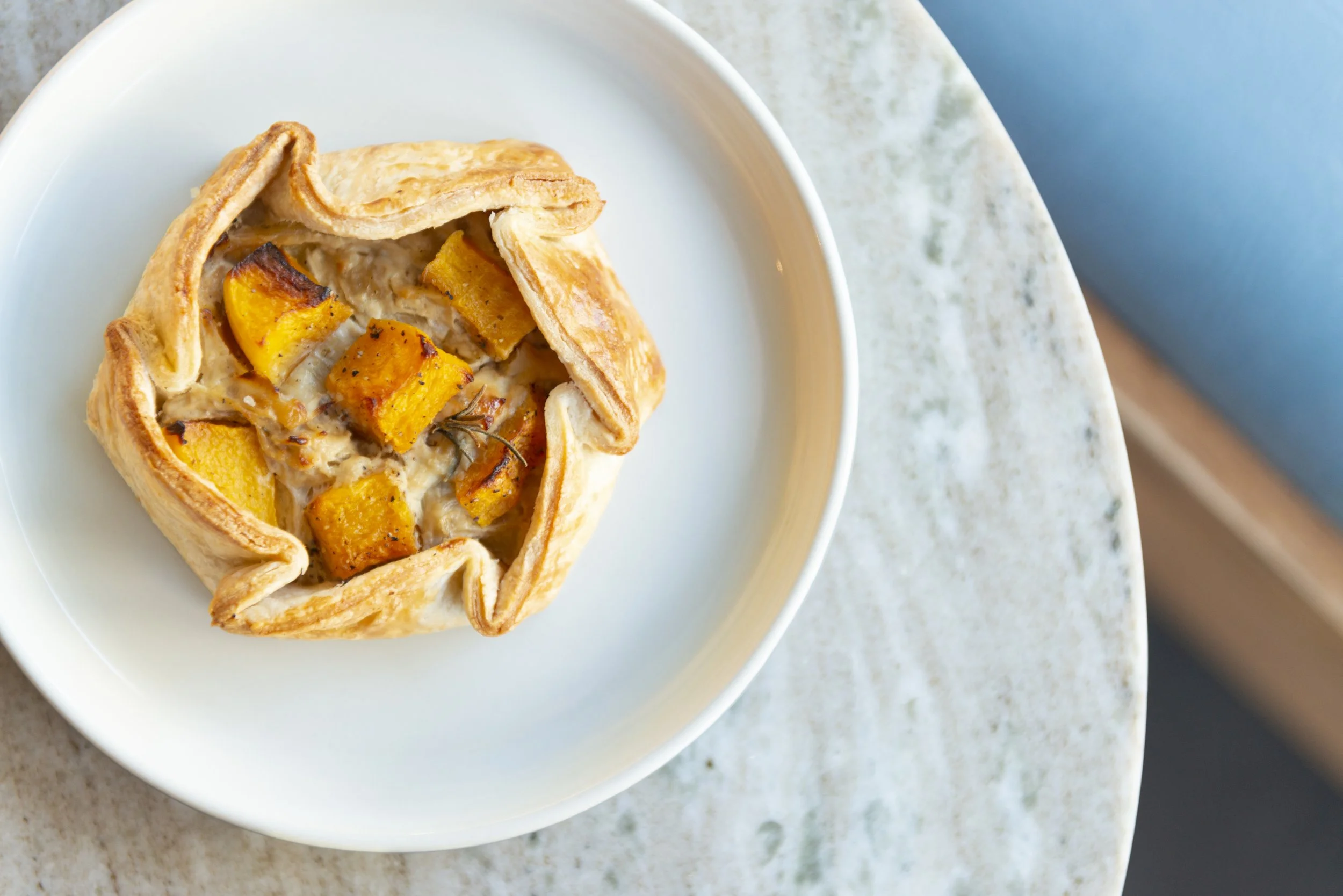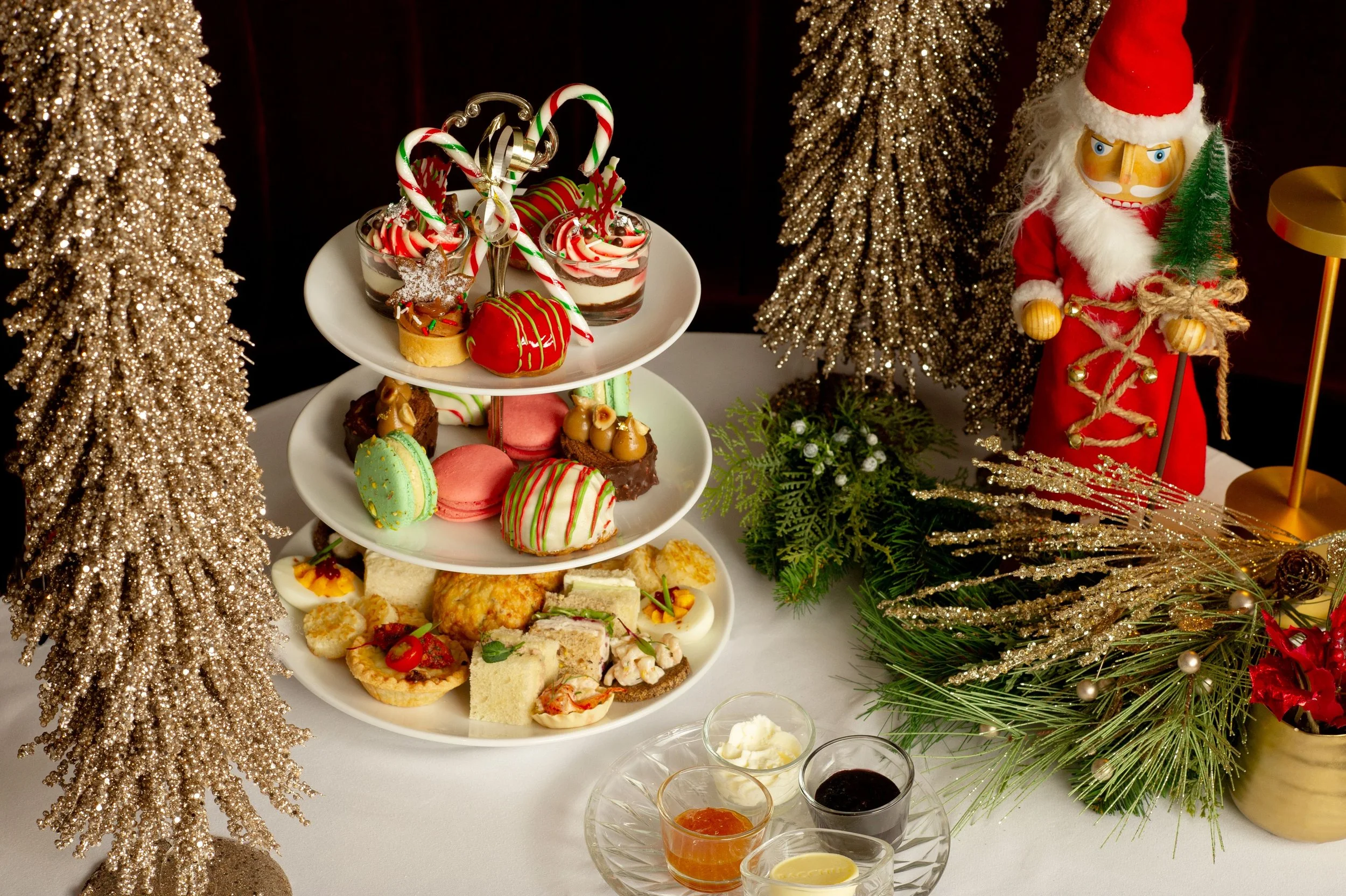Slow-food thinking fills The Modern Pantry
With her interest in culinary anthropology, chef and co-owner Kendall Parslow opens bakery-café’s new location in West Vancouver
The Modern Pantry.
CHEF KENDALL PARSLOW developed an affinity for the slow-food movement after spending time in Europe, where, building on her interest in culinary anthropology, she did her master’s degree in food culture and communications at Pollenzo, Italy’s University of Gastronomic Sciences. She worked at Borough Market in London, one of the world’s oldest markets. Upon moving back to B.C., she began making granola out of a commissary kitchen, fine-tuning her recipe that calls for ingredients like fresh lemon zest and juice, freshly made applesauce, and hand-chopped rosemary.
Her appetite for having her own food business grew, and in 2018 she opened the doors to The Modern Pantry, a bakery-café in North Vancouver’s Maplewood Village area. Parslow and her husband, Matthew, recently launched a second location in West Vancouver. It marks a full-circle moment for her: the municipality is where Parslow was born and raised, and she even used to work in the café’s location at 2232 Marine Drive when it was home to French restaurant La Régalade. Both of The Modern Pantry locations are rooted in Parslow’s conviction that food helps form community.
“Food is the great equalizer, and I find it always brings people together,” Parslow tells Stir. “Gathering around a meal is a social experience and gives friends a focal point. It also often bridges the awkward social gap between strangers and sparks conversation.
“Growing up in West Vancouver, there was never much to do or places to hang out that weren’t a formal restaurant,” says Parslow, who has a one-year-old son. “It’s a great community, and I wanted to create a space akin to the cafés in Europe, which are used more like a living room. Yesterday I had a new customer come in who was telling me it was his second visit, and on the first he had started chatting with the parents of one of our employees and they had ended up talking for two hours. That’s a pretty cool thing in a time when people’s lives are increasingly insular. Going forward, as we hold events and workshops in the space, I would love to see more of those connections forming.”
The Modern Pantry
Designed by Parslow’s architect father, the 1,800-square-foot café serves freshly made bread, baked goods, sandwiches, salads, and more, with a focus on products from local growers, producers, and suppliers—what Parslow calls “real food”. Think produce from Klippers Organics, House of Funk coffee, BC Buzz Honey, Salt Spring Sea Salt, and so on.
There are rosemary-black pepper crackers that go especially nicely with house-made feta-onion spread; charred onion, spinach, and cheddar breakfast buns; pecan sticky buns; vegetarian quiche; sandwiches of various types (like porchetta with arugula pesto and pickled peppers); butternut squash crostatas with caramelized onions and cream cheese; a show-stopping lemon olive-oil tart; gluten-free burnt-lemon cake with cardamom and blood orange; house-made pickles, sauces, granola, jams, and caramels… The list goes on, and the ingredients are all pronounceable.
Kendall Parslow.
The grilled cheese on house-made organic white sourdough with spicy tomato jam has become a regulars’ favourite. “Our goal [with the sourdough] was creating an everyday family bread that could be used for toast and sandwiches, was loved by adults and kids alike, and had all the nutritional benefits of organic, traditionally fermented bread,” Parslow says. “The grilled cheese actually started with the tomato jam. We wanted to have a more savoury condiment in our lineup and we were so excited about this product, but when people saw it on the shelves they didn’t really know what it was or what to do with it. The grilled cheese was an opportunity to highlight how versatile a product it is and have people try it… Now we can’t make enough of the stuff.”
Then there are ever-changing danishes: vanilla pastry cream, local blueberries, and candied citrus peel; roasted strawberry with vanilla pastry cream and thyme; maple pastry cream with apples stewed in warm spices; and chocolate frangipane topped with orange fennel marmalade, to name just a few, depending on the season and Parslow’s imagination.
“I didn’t have a lot of experience with laminated pastries and knew that if we were going to offer danishes they had to be awesome, so we brought in a consultant who at the time I thought was making some of the best laminated pastries in the city,” Parslow says. “She brought a slew of techniques and helped us get to where we’re at. The fillings are one of the creative outlets we get to have… The danishes are a place that I get to play with whatever flavours are floating around in my head.
“Imagining flavour combinations and then working them into reality goes beyond the scientific aspect of baking, and realizing that vision is something I get a lot of joy from,” she adds. “I’m always drawing inspiration from bakers I follow internationally in technique, presentation, and flavours. But I also find a lot of inspiration in architecture and interior design, especially when it comes to how layers come together. There are a lot of similarities in design and food in terms of layering texture and colour and blending dissimilar styles to make something new.”
Layered food, slow food, real food: Parslow’s experience in Italy continues to influence her approach to culinary arts and life in general in several ways, including how she and her husband juggle two locations, a family, and his regular full-time job.
“From a high-level perspective, my time there has made me critical of the food system and very conscious of the buying decisions we make both for ingredients and packaging,” Parslow says. “It also changed my attitude about how a day has to run… Enjoying time with family and friends during the day and slowing down doesn’t have to mean accomplishing less or contributing less to society, it’s just a change in priorities and time management.”
















